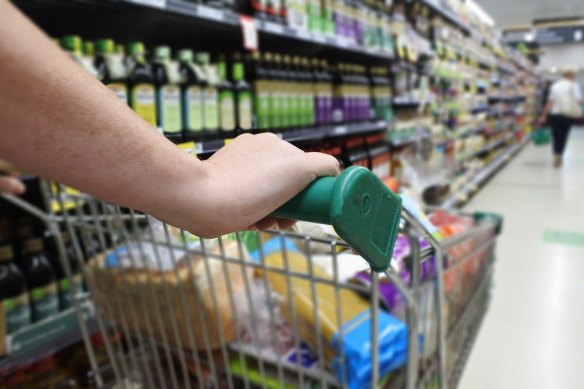This was published 6 months ago
Big companies dodge spending crunch as small businesses face rising failure risk
By Millie Muroi
Large companies, including supermarkets, have become more resilient, while small retailers face some of the worst risks of failure amid a continuing consumer spending crunch and rising rental and mortgage costs.
Data from credit bureau illion this week revealed that business conditions worsened substantially in the year to March 2024, with the number of businesses at severe risk of failing 80 per cent higher than just 15 months ago.

illion’s Barrett Hasseldine said larger businesses were at a lower risk of failing compared with a year ago.Credit: iStock
Barrett Hasseldine, head of modelling at illion, said the failure risk was concentrated among businesses in NSW and Victoria, where the level of business stress was 4 per cent to 5 per cent higher than the national average.
“The cost of rent is higher in Victoria and NSW, which is putting more pressure on households and family budgets in those states, reducing their ability to spend, as well as affecting the rent of businesses operating in those states,” Hasseldine said. Lower levels of government support for businesses and fewer amnesties from lenders also played a part, he said.
Hasseldine said business conditions tended to mirror household conditions – including consumer credit risk, consumer spending and consumer confidence – but with a three- to six-month lag.
While many people took out credit cards 12 months ago to help cover their monthly expenses, Hasseldine said those consumers would probably start to pull back further on their discretionary spending.
“Quite a few consumers are now starting to fall behind on their credit card payments, and so that lifeline is now coming to an end,” he said.
Businesses in sectors including food services and accommodation are especially at risk, Hasseldine said. “Financial services and insurance certainly are seen much more as an essential service to most households, compared to going out for a Sunday breakfast,” he said.
MLC Asset Management portfolio manager Anthony Golowenko said while the federal government’s stage 3 tax cuts, due to take effect in July, would help consumers cover some costs, much of the benefit would be eroded by price pressures in non-discretionary spending categories, such as food and education.
“Some businesses are able to push through their cost pressures, but not all can do that,” Golowenko said. “Tighter consumer spending and deferred expenditure on some categories will manifest in some businesses not being able to continue, especially indebted businesses, and those with considerable costs, including in construction.”

Supermarkets are weathering the consumer spending crunch, with smaller shops left out in the cold.Credit: iStock
Smaller businesses are at the greatest risk of failing, Hasseldine said, while some of the largest are seeing reduced risk of failure because of their scale and pricing power.
“What we’re seeing is businesses earning under $10 million of revenue a year are facing failure risk about 20 per cent higher than what it was last year,” he said. “Quite interestingly, you have companies earning over $100 million, where their risk of failure is actually reduced, in some cases by up to nearly 30 per cent.”
Hasseldine said there was a risk of increasing concentration in industries, such as food services and retail, where many of the smaller players are at higher risk of failing than their larger counterparts.
“We can see in our data that spending at fruit and vegetable stores, butchers and delis has reduced year-on-year, whereas spending in supermarkets is elevated,” he said.
The coming year will be especially tough for industries heavily exposed to consumer discretionary spending, Hasseldine said, with more businesses set to fail.
“Until discretionary spending starts to return, we’re going to see business failures worsen before they improve,” he said. “Every month, we’re seeing more and more businesses falling into our highest risk category of being at really severe risk of failing in the coming year. It’s definitely a warning sign that it has deteriorated quickly.”
The Business Briefing newsletter delivers major stories, exclusive coverage and expert opinion. Sign up to get it every weekday morning.